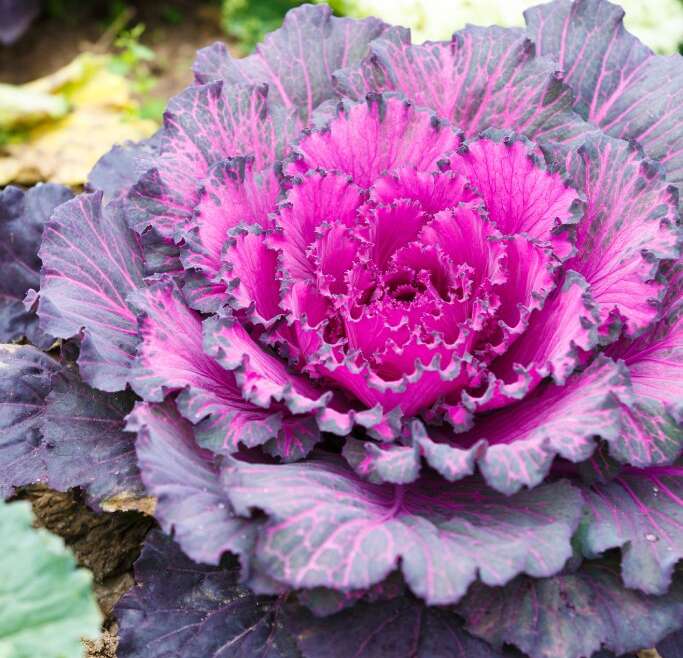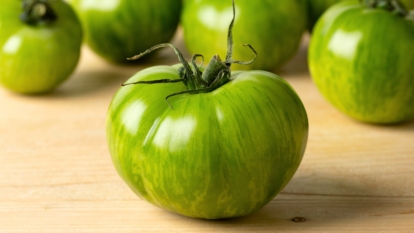Purple lettuce and purple leafy greens look pretty in the garden as well as in salads and other dishes. Eating a rainbow of colors and the pigments that produce them are good for your health. Purple lettuce, cabbage, kale and greens are nutritious and easy to grow.
Purple Lettuce Varieties
Lettuce is an accessible green. It’s easy to grow and easy to eat. While lettuce doesn’t pack as much nutritional value as some of the sturdier greens, the purple and red varieties offer additional antioxidants.
- Red Sails – This is a classic variety of lettuce that is easy to find. It has frilly leaves in a deep reddish purple color. It doesn’t bolt as easily as some varieties, and even tastes good after bolting.
- Merlot – This leaf lettuce is the color of your favorite red wine. It produces large leaves that are great for salads and sandwiches. You can harvest the baby leaves in about 30 days and mature leaves in 60.
- Sea of Red – Known as a cutting lettuce, Sea of Red has pretty purple leaves that you can remove as needed. The leaves are narrow and lance-shaped, providing an attractive row to vegetable beds or even the edges of flower beds.
- Red Deer Tongue – This heirloom variety is harder to find but well worth the search. It produces sturdy, long, and narrow leaves of deep purple. It does blot quickly in summer, so grow it in spring and fall for the best results.
Purple Cabbage Varieties
Some cabbage varieties are more strikingly purple than the lettuces that have a reddish hue. Try these cabbages for their pretty colors, nutritional value, and diverse culinary uses.
- Red Acre – Red Acre is a great option if you only choose one cabbage for the garden. It produces bright purple leaves and matures earlier than most other varieties. The heads are fairly small, so it’s good for tight spaces. It is also resistant to some common diseases.
- Amarant – For a purple cabbage that better tolerates the heat of summer, choose Amarant. It stores well, too, so you can harvest in the fall and enjoy cabbage well into winter.
- Purple Savoy – Savoy cabbages have crinkly, textured leaves and a sweeter flavor than smooth cabbages. The purple cultivar is truly unique in appearance, with a mix of green and purple colors.
Purple Kale Varieties
Kale is a sturdy green that also comes in purple. You can find edible purple varieties, but be aware that many flowering kales are purely ornamental.
- Redbor – Redbor is a beautiful variety of curly care with dense, tight frills and a deep reddish purple color. It looks striking in the garden and is also very nutritious and versatile in the kitchen.
- Red Russian – Originating in Siberia, this is a very hardy variety of flat-leaf kale. The leaves are mostly green but have a pretty purple coloring that begins in the veins and stems and extends partway into the leaves.
- Glamour Red – This is a pretty ornamental cultivar with green outer leaves and purple/magenta leaves inside the rosette. The leaves are all very frilly and tightly packed.
Other Purple Greens to Try
Other types of greens come in purple and red shades and can serve as ornamentals and edible vegetables. Radicchio is naturally purple, but you can also find purple mustard greens, chard, and kohlrabi. Also, look for other members of the cruciferous family (this includes kale and cabbage), like purple Brussels sprouts and purple cauliflower.
Frequently Asked Questions
Why Are Some Lettuce Leaves Purple?
Lettuces, and other plants with purple leaves contain compounds called anthocyanins. These compounds give them their unique color. Some plants evolved these pigments to absorb extra photons of light that would otherwise cause free radical damage.
Is Purple Lettuce Good for You?
All vegetables are good for you, but the red/purple color comes from compounds with specific health benefits. They are called anthocyanins, and they are antioxidants. Anthocyanins have been linked with longevity, improved cardiovascular health, improved eye health, reduced cancer risk, and reduced dementia risk.




